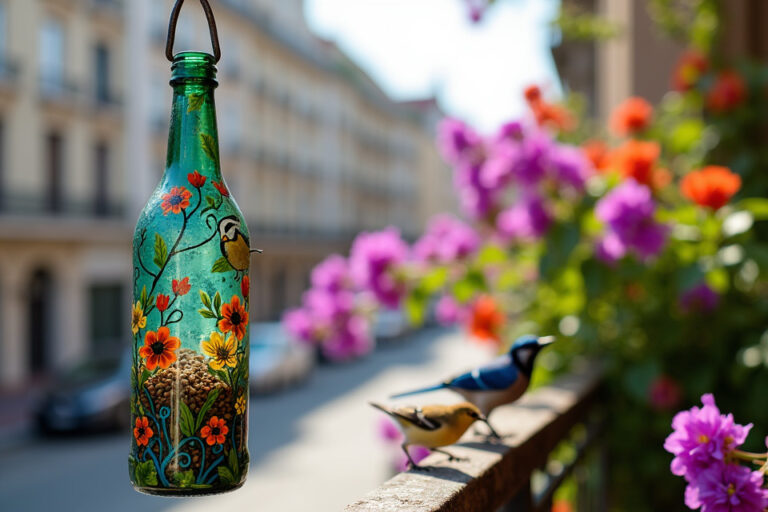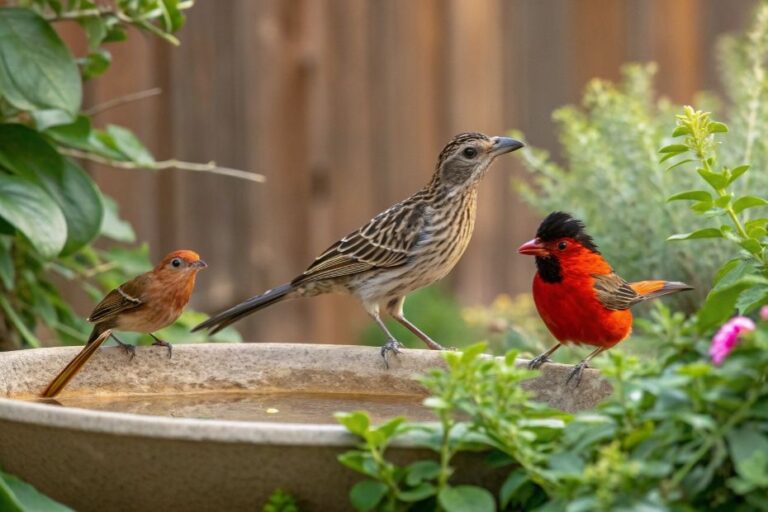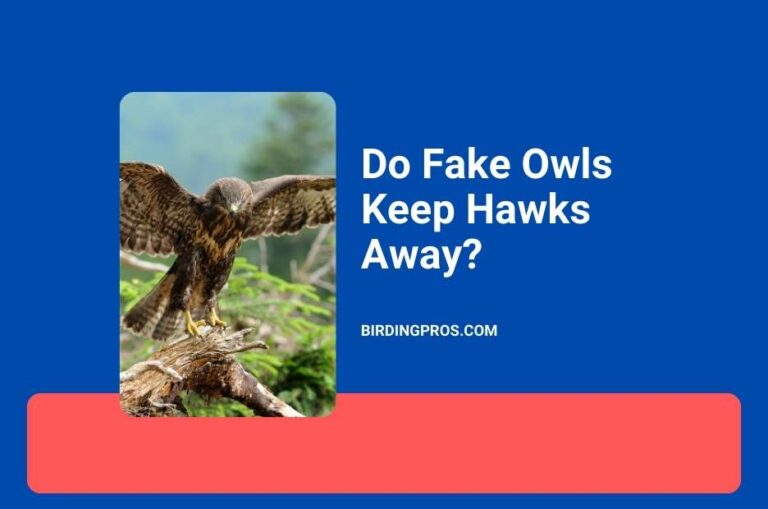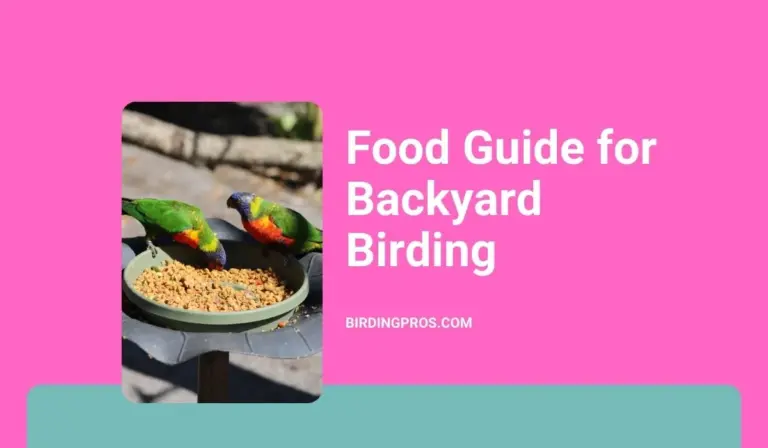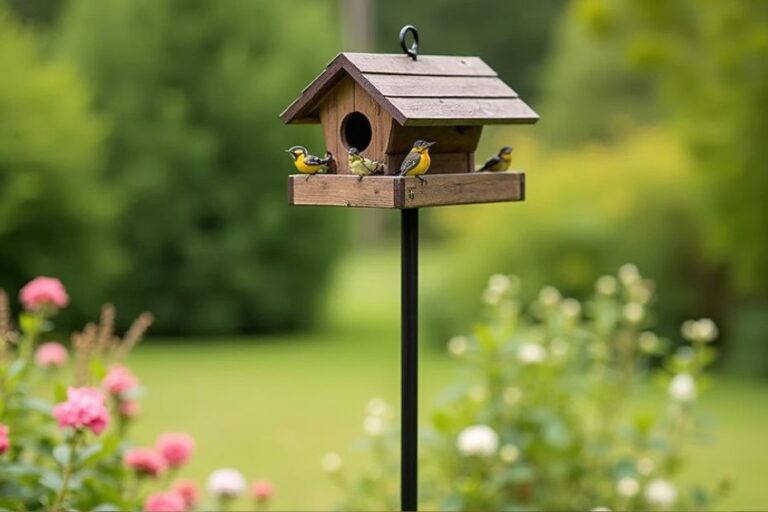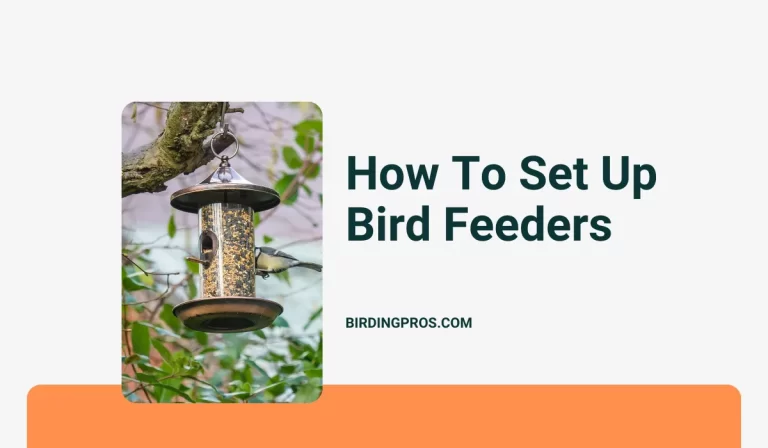How to Make a Bird-Friendly Backyard in 30 Days
This comprehensive guide will walk you through a day-by-day plan to transform your backyard into a bird haven. From selecting the right plants to setting up feeders and birdbaths, we’ll cover everything you need to know to create a welcoming environment for birds.
Creating a bird-friendly backyard is a rewarding and enjoyable project that can be completed in just 30 days. By providing the right food, water, shelter, and nesting sites, you can attract a variety of bird species to your yard.
Table of Contents
Week 1: Planning and Preparation

Day 1: Assess Your Yard
Before you start making changes, take a day to assess your yard. Walk around your property and take note of the existing plants, trees, and shrubs. Identify areas that could be enhanced to provide better food, water, and shelter for birds. Consider the following:
- Do you have a variety of plants that provide food and shelter?
- Are there any open spaces that could be used for feeders or birdbaths?
- Are there any potential hazards, such as predators or reflective windows?
Day 2: Research Native Plants
Native plants are the best choice for attracting birds because they provide natural food sources and are well adapted to the local climate. Spend a day researching the native plants in your region. Look for trees, shrubs, and flowers that produce seeds, berries, nectar, or insects that birds eat. Make a list of plants that would thrive in your yard and attract a variety of bird species.
Day 3: Plan Your Planting
Using the information you gathered on Day 2, sketch out a plan for your yard. Decide where you will plant trees, shrubs, and flowers to create a diverse habitat. Consider the following tips:
- Group plants of different heights to provide layered shelter.
- Plant in clusters to create dense areas for birds to hide and nest.
- Choose plants that bloom and produce food at different times of the year to provide a continuous food source.
Day 4: Shop for Plants and Supplies
Visit a local nursery or garden center to purchase the plants on your list. In addition to plants, you will need soil, mulch, and gardening tools. While you’re there, also pick up a few bird feeders, birdbaths, and other bird-friendly accessories.
Day 5: Prepare the Soil
Healthy soil is essential for successful planting. Spend a day preparing the soil in the areas where you will be planting. Remove any weeds or grass, and till the soil to a depth of about 12 inches. Mix in compost or other organic matter to improve soil fertility and drainage.
Day 6: Plant Trees and Shrubs
Start by planting the larger trees and shrubs. Dig holes that are twice as wide as the root balls and just as deep. Place the plants in the holes, fill with soil, and water thoroughly. Mulch around the base of each plant to retain moisture and suppress weeds.
Day 7: Plant Flowers and Ground Cover
Once the trees and shrubs are in place, plant flowers and ground cover. Choose a mix of perennials and annuals to provide a variety of colors and textures. Plant flowers in clusters to create a natural look and attract pollinators, which in turn attract insect-eating birds.
Read More: What Attracts Birds to Your Yard: A Comprehensive Guide
Week 2: Setting Up Bird Feeders and Water Sources
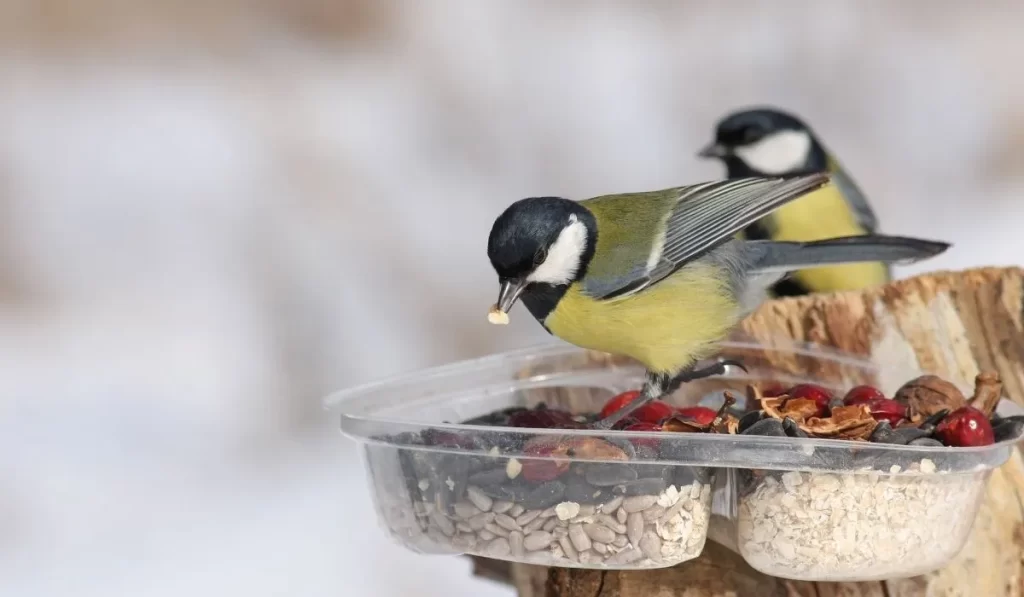
Day 8: Select Bird Feeders
Choose a variety of bird feeders to attract different species. Common types of feeders include hopper feeders, tube feeders, platform feeders, and suet feeders. Place the feeders in areas where they are easily visible and accessible, but also near trees or shrubs that provide cover for the birds.
Day 9: Fill Feeders with Appropriate Food
Fill your feeders with a variety of bird foods to attract different species. Common bird foods include:
- Black Oil Sunflower Seeds: Attracts a wide range of birds, including finches, chickadees, and cardinals.
- Nyjer (Thistle) Seeds: Popular with finches, especially goldfinches.
- Millet: Preferred by ground-feeding birds like sparrows and doves.
- Suet: Attracts insect-eating birds like woodpeckers and nuthatches.
- Nectar: For hummingbirds and orioles.
Day 10: Install Birdbaths
Birds need water for drinking and bathing. Install one or more birdbaths in your yard. Place them in shaded areas to keep the water cool and prevent algae growth. Ensure the birdbaths are shallow, with a depth of 1-2 inches, and clean them regularly to keep the water fresh.
Day 11: Add Moving Water Features
Moving water attracts more birds than still water. Consider adding a small fountain, dripper, or mister to your birdbath. The sound and movement of the water will draw birds to your yard and provide them with a clean, fresh water source.
Day 12: Set Up Suet Feeders
Suet is a high-energy food that attracts insect-eating birds. Set up suet feeders in areas where they are easily accessible to birds but safe from predators. Hang the feeders from tree branches or mount them on poles near shrubs or trees.
Day 13: Install Hummingbird Feeders
Hummingbirds are attracted to nectar feeders filled with a solution of four parts water to one part white granulated sugar. Hang the feeders in sunny areas, preferably near nectar-rich flowers. Clean the feeders regularly to prevent mold and fermentation.
Day 14: Create a Watering Schedule
Establish a regular schedule for cleaning and refilling your birdbaths and feeders. Clean birdbaths and refill them with fresh water every few days. Check feeders daily and refill them as needed to ensure a constant supply of food for the birds.
Week 3: Creating Shelter and Nesting Sites
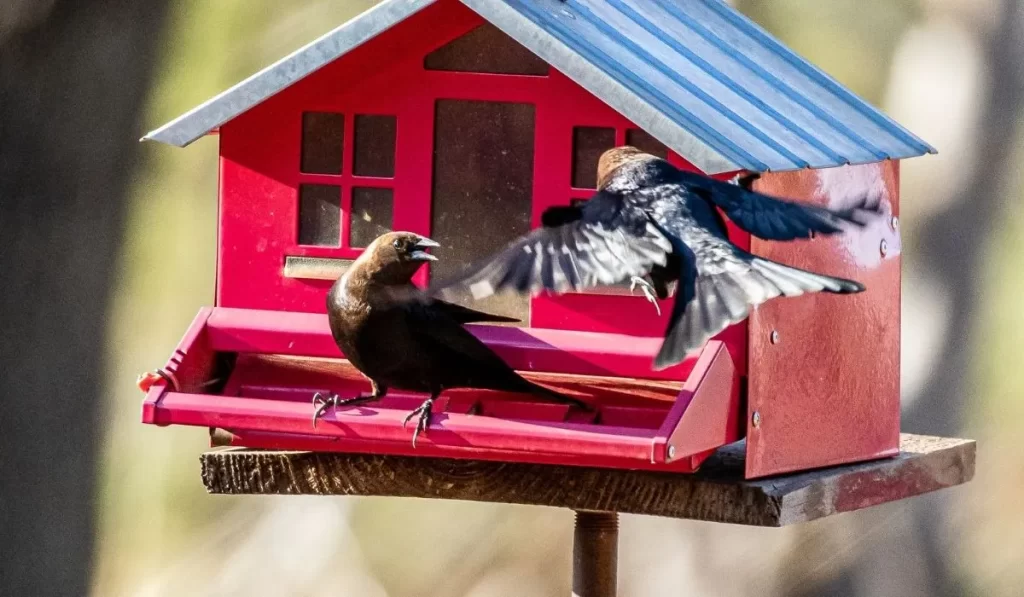
Day 15: Plant Dense Shrubs
Dense shrubs provide shelter and nesting sites for birds. Plant a variety of shrubs, such as holly, juniper, and dogwood, to create a layered habitat. Position the shrubs near feeders and water sources to provide birds with quick access to cover.
Day 16: Install Nesting Boxes
Nesting boxes, or birdhouses, provide safe places for birds to raise their young. Install nesting boxes for different species, such as bluebirds, chickadees, and wrens. Place the boxes at the appropriate height and orientation for each species, and ensure they are mounted securely.
Day 17: Create Brush Piles
Brush piles offer excellent shelter for birds. Create a brush pile in a corner of your yard using fallen branches, twigs, and leaves. The pile will provide cover for ground-feeding birds and attract insects for insect-eating birds.
Day 18: Provide Natural Nesting Materials
Help birds build their nests by providing natural nesting materials. Place small piles of twigs, grasses, moss, and feathers around your yard. You can also hang mesh bags filled with nesting materials from tree branches.
Day 19: Install Perches
Perches give birds a place to rest and survey their surroundings. Install perches, such as tree branches or poles, near feeders and water sources. Ensure the perches are placed at different heights to accommodate different bird species.
Day 20: Plant Climbing Vines
Climbing vines, such as honeysuckle and clematis, provide additional shelter and nesting sites for birds. Plant vines along fences, trellises, or arbors to create vertical habitat. Choose native species to attract local birds and support pollinators.
Day 21: Inspect and Maintain Nesting Sites
Regularly inspect your nesting boxes and other nesting sites to ensure they are clean and in good condition. Remove any old nests or debris, and check for signs of predators or pests. Maintenance will help ensure the safety and comfort of nesting birds.
Week 4: Enhancing Habitat and Monitoring Bird Activity
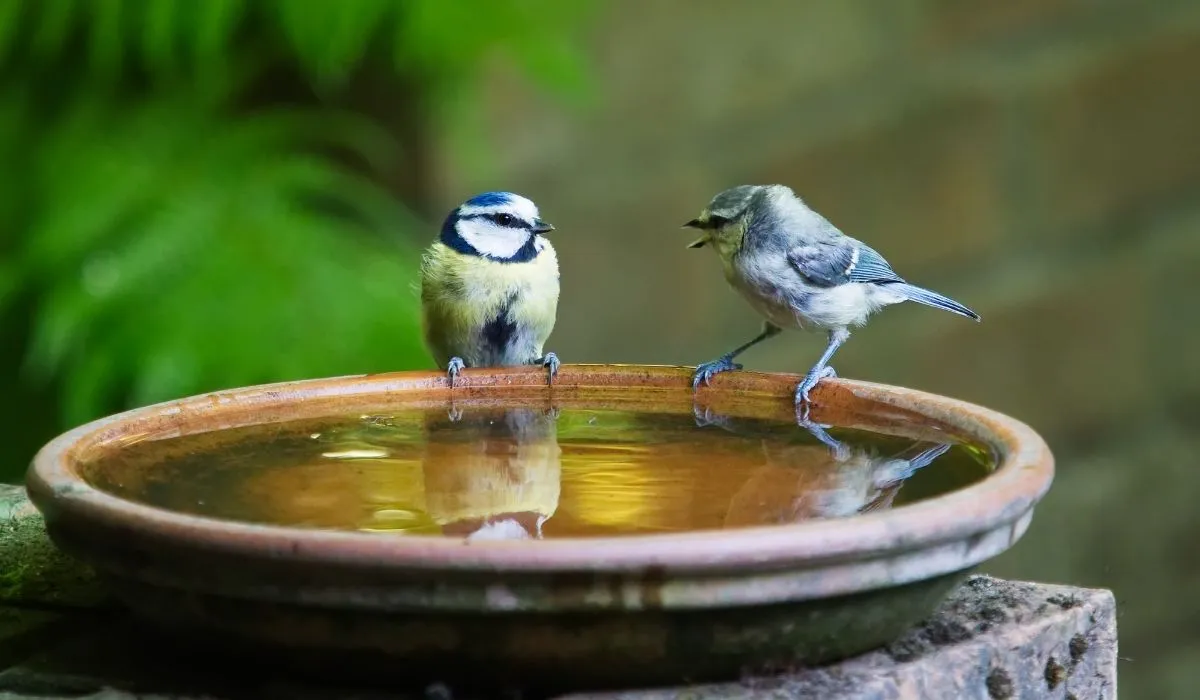
Monitoring Bird Activity
Day 22: Add Fruit-Bearing Plants
Fruit-bearing plants provide a natural food source for birds. Plant trees and shrubs that produce berries or other fruits, such as serviceberry, elderberry, and crabapple. These plants will attract fruit-eating birds and provide food throughout the year.
Day 23: Plant Seed-Producing Flowers
Flowers that produce seeds are a valuable food source for birds. Plant seed-producing flowers, such as sunflowers, coneflowers, and black-eyed Susans, in your garden. Allow the flowers to go to seed and leave the seed heads in place for birds to feed on.
Day 24: Create a Bird-Friendly Lawn
A bird-friendly lawn is more than just grass. Incorporate native grasses, clover, and wildflowers into your lawn to provide food and habitat for birds and insects. Avoid using pesticides and herbicides, which can harm birds and their food sources.
Day 25: Install Windbreaks
Windbreaks provide protection from harsh weather and predators. Plant hedges or rows of trees along the edges of your yard to create windbreaks. Choose dense, evergreen species for year-round protection.
Day 26: Set Up Bird Monitoring Stations
Monitoring bird activity can help you understand the success of your bird-friendly efforts. Set up monitoring stations, such as observation posts or bird cams, to track the birds visiting your yard. Keep a journal of your observations and note any changes in bird activity.
Day 27: Participate in Citizen Science
Contribute to bird conservation by participating in citizen science projects. Join programs like eBird, Project FeederWatch, and the Great Backyard Bird Count to share your bird sightings and help scientists track bird populations and trends.
Day 28: Educate Family and Neighbors
Share your knowledge and enthusiasm for bird-friendly practices with your family and neighbors. Encourage them to create their own bird-friendly yards and participate in bird conservation efforts. The more people involved, the better the
habitat for birds.
Day 29: Evaluate and Adjust
After a month of hard work, take a day to evaluate your bird-friendly yard. Observe the birds that are visiting and note any areas that could be improved. Make adjustments as needed to enhance the habitat and attract more birds.
Day 30: Enjoy and Celebrate
Congratulations! You’ve created a bird-friendly backyard in just 30 days. Take time to enjoy the fruits of your labor. Sit back, relax, and watch the birds as they visit your feeders, bathe in your birdbaths, and nest in your shrubs and trees. Celebrate your success and the positive impact you’ve made on the local bird population.
FAQs About Make a Bird-Friendly Backyard
What types of plants should I include in my bird-friendly backyard?
Include native trees like oak, maple, and pine; shrubs such as holly, serviceberry, and elderberry; flowers like sunflowers, coneflowers, and black-eyed Susans; and vines such as honeysuckle and clematis.
How often should I clean my bird feeders and birdbaths?
Clean bird feeders every two weeks and birdbaths every few days. Use a bleach solution (1 part bleach to 9 parts water) for feeders and scrub birdbaths with a brush, rinsing thoroughly.
How can I attract a variety of bird species to my yard?
Offer diverse foods (sunflower seeds, Nyjer seeds, millet, suet, peanuts, nectar), provide water sources (birdbaths, fountains), plant dense shrubs and trees for shelter, and install nesting boxes with natural materials.
What steps can I take to make my yard safer for birds?
Keep cats indoors, use window decals/screens to prevent collisions, avoid pesticides, and provide safe nesting sites with dense shrubs and maintained nesting boxes.
Conclusion
Creating a bird-friendly backyard is a rewarding and fulfilling project that can be completed in just 30 days. By following this day-by-day plan, you can provide food, water, shelter, and nesting sites for a variety of bird species.
Not only will you enjoy the beauty and diversity of the birds visiting your yard, but you’ll also be contributing to bird conservation and supporting local wildlife.
Whether you’re a seasoned birdwatcher or new to backyard birding, transforming your yard into a bird haven is a fantastic way to connect with nature and make a positive impact on the environment.
Embrace the journey and enjoy the wonderful world of birds right outside your door.

